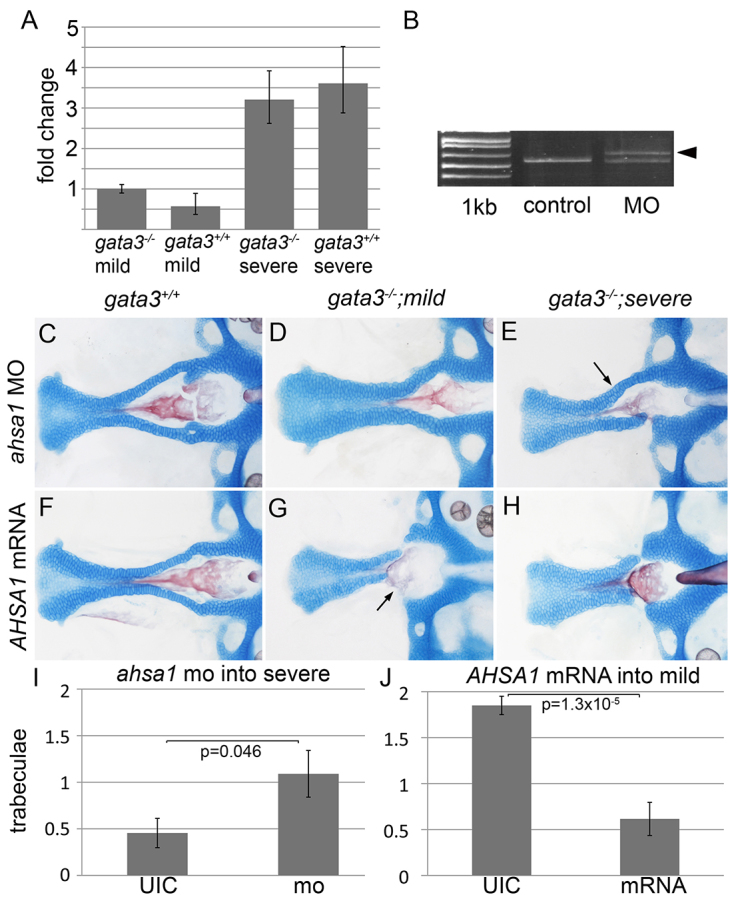Fig. 3.

Ahsa1 is necessary and sufficient to promote severe gata3 phenotypes. (A) ahsa1 expression is higher in gata3 mutants and wild-type embryos in the severe background. (B) The ahsa1 morpholino causes misplicing of ahsa1 mRNA [arrowhead in morpholino (MO) lane; 1 kb=1 kb plus ladder]. (C,D) In both wild-type and mild mutant embryos ahsa1 morpholino injection did not disrupt the trabeculae. (E) Knocking down ahsa1 in severe mutants resulted in a partial restoration of the trabeculae (arrow). (F) Wild-type embryos injected with low levels of AHSA1 mRNA display no craniofacial defects. (G,H) Under these conditions, mutants from the (G) mild background closely resemble those from the (H) severe background, with trabeculae loss (arrows). (I) Ahsa1 loss-of-function significantly increases the number of trabeculae in severe gata3 mutants (average=1.09, s.e.m.=0.25, s.d.=0.83, n=11), relative to uninjected control mutants (average=0.455, s.e.m.=0.16, s.d.=0.52, n=11). (J) Injection of AHSA1 mRNA significantly reduces the number of trabeculae in mild gata3 mutants (average=0.615, s.e.m.=0.18, s.d.=0.37, n=13), relative to uninjected mutants (average=1.85, s.e.m.=0.1, s.d.=0.65, n=25). (C–H) Flat-mount images; anterior to the left.
